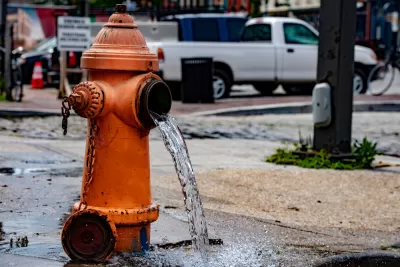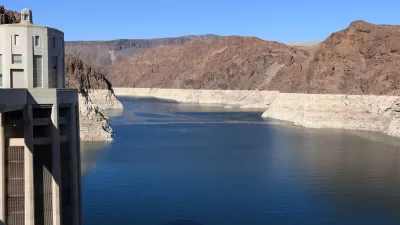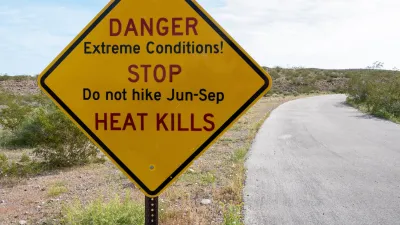A recently published report finds more evidence to elevate heat as a matter of environmental justice.

Meg Anderson and Sean McMinn report on the connection between urban heat islands and neighborhoods with high proportions of low-income people of color.
The article starts with the example of Baltimore, where the franklin Square neighborhood is "hotter than about two-thirds of the other neighborhoods in Baltimore — about 6 degrees hotter than the city's coolest neighborhood."
"It's also in one of the city's poorest communities, with more than one-third of residents living in poverty," according to Anderson and McMinn.
The article is sharing news of a recent investigation by NPR and the University of Maryland's Howard Center for Investigative Journalism.
"In dozens of major U.S. cities, low-income neighborhoods are more likely to be hotter than their wealthier counterparts," according to the article. "Those exposed to that extra heat are often a city's most vulnerable: the poorest and, our data show, disproportionately people of color."
The investigation echoes a report from earlier this year that connects shade with environmental justice, exemplified in that case by the city of Los Angeles. In the case of Baltimore, Anderson and McMinn make it clear that the city is not a special case: "NPR analyzed 97 of the most populous U.S. cities using the median household income from U.S. Census Bureau data and thermal satellite images from NASA and the U.S. Geological Survey. In more than three-quarters of those cities, we found that where it's hotter, it also tends to be poorer. And at least 69 had an even stronger relationship than Baltimore, the first city we mapped."
FULL STORY: As Rising Heat Bakes U.S. Cities, The Poor Often Feel It Most

Maui's Vacation Rental Debate Turns Ugly
Verbal attacks, misinformation campaigns and fistfights plague a high-stakes debate to convert thousands of vacation rentals into long-term housing.

Planetizen Federal Action Tracker
A weekly monitor of how Trump’s orders and actions are impacting planners and planning in America.

In Urban Planning, AI Prompting Could be the New Design Thinking
Creativity has long been key to great urban design. What if we see AI as our new creative partner?

King County Supportive Housing Program Offers Hope for Unhoused Residents
The county is taking a ‘Housing First’ approach that prioritizes getting people into housing, then offering wraparound supportive services.

Researchers Use AI to Get Clearer Picture of US Housing
Analysts are using artificial intelligence to supercharge their research by allowing them to comb through data faster. Though these AI tools can be error prone, they save time and housing researchers are optimistic about the future.

Making Shared Micromobility More Inclusive
Cities and shared mobility system operators can do more to include people with disabilities in planning and operations, per a new report.
Urban Design for Planners 1: Software Tools
This six-course series explores essential urban design concepts using open source software and equips planners with the tools they need to participate fully in the urban design process.
Planning for Universal Design
Learn the tools for implementing Universal Design in planning regulations.
planning NEXT
Appalachian Highlands Housing Partners
Mpact (founded as Rail~Volution)
City of Camden Redevelopment Agency
City of Astoria
City of Portland
City of Laramie





























